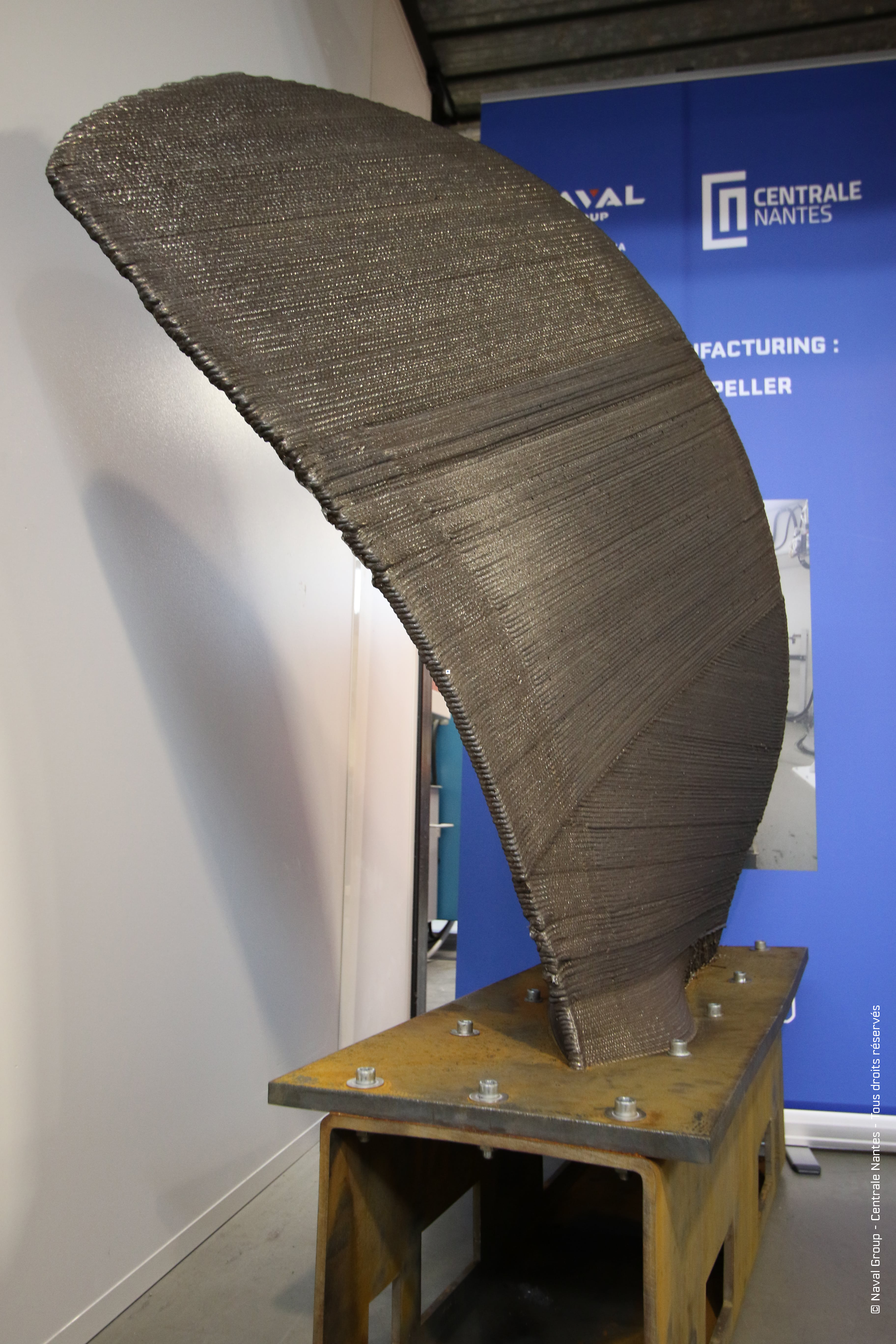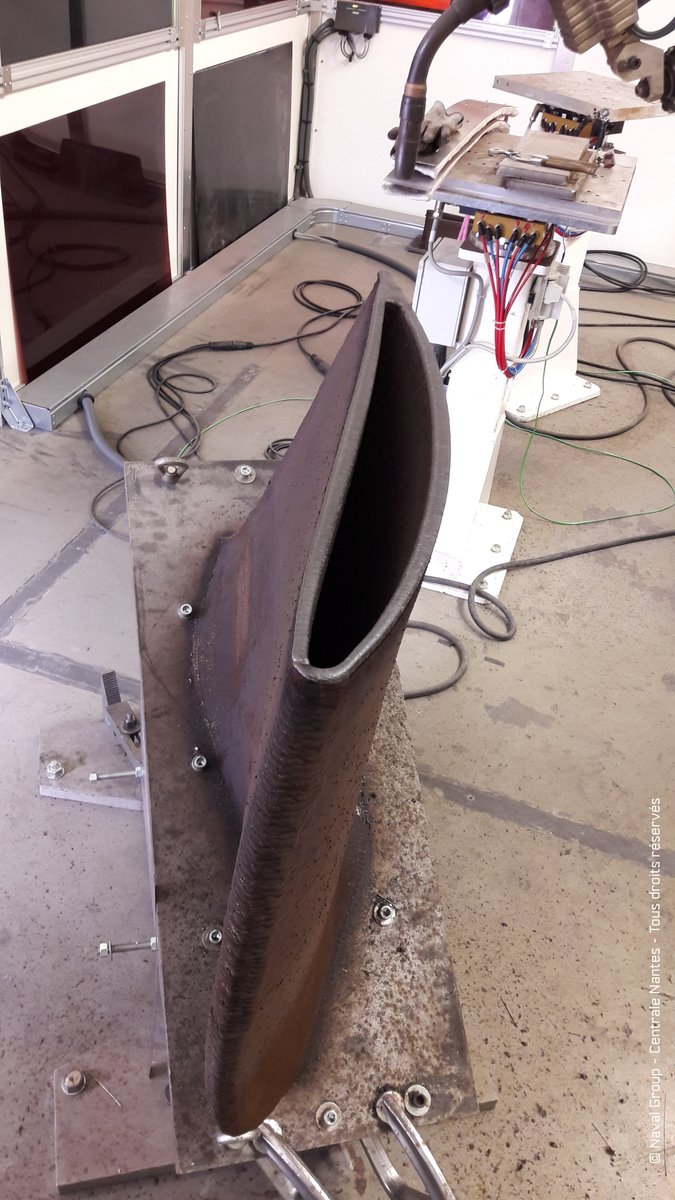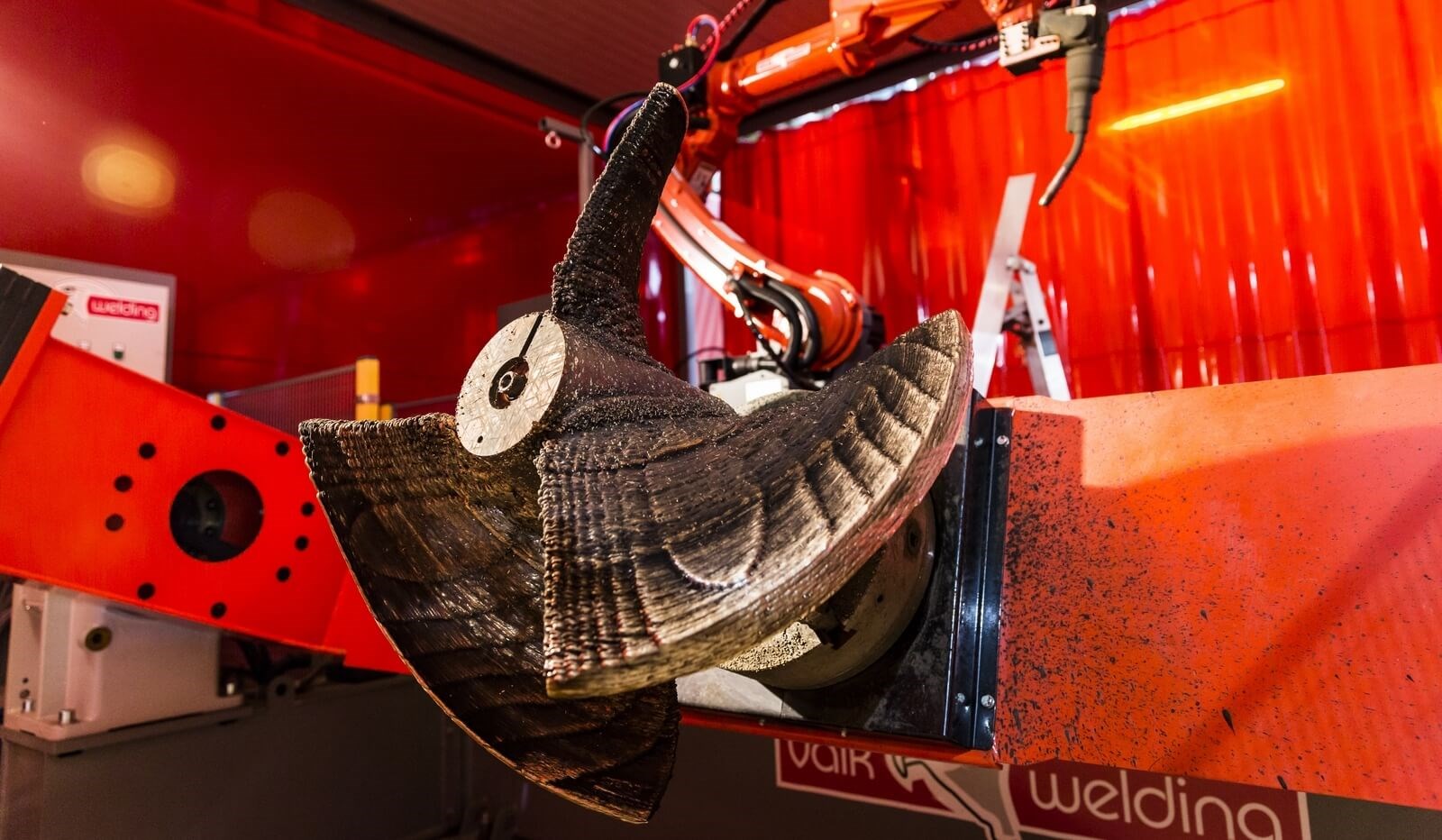Naval Group, a French company focusing on naval defence, and Centrale Nantes engineering school have 3D printed the first hollow propeller blade demonstrator. Sirenha, a Centrale Nantes spin-off and subsidiary of Naval Group, helmed the design of the blade. It was manufactured using the Wire Arc for Additive Manufacturing (WAAM) process.
The blades were produced with the aim of reducing the environmental impact of ships, as part of the Horizon 2020 (H2020) project, RAMSSES (Realization and Demonstration of Advanced Material Solutions for Sustainable and Efficient Ships).
The goal of the collaborative program RAMSSES is to demonstrate the benefits of advanced material solutions in shipbuilding for environmentally efficient ship designs. With funding from the European Commission, Centrale Nantes and Naval Group are leading the project on the production of innovative propeller demonstrators to improve the operational capabilities of ships.
Patrice Vinot, Propeller Package Manager for the RAMSSES project, explained that “Although additive manufacturing is increasingly present in industry, the programming and design of complex parts, such as propeller blades for ships, represents a considerable challenge for our teams and our partners.”
“Taking part in projects such as RAMSSES and coordinating our network of academic and industrial partners will allow us to bring 3D printing into shipyards for the long term.”

Complex, large-scale design enabled by WAAM
The WAAM process applies a robotic welding arm which uses an electric arc plasma beam on metal wire feedstock to fabricate 3D objects. This process also has the ability to print on existing surfaces such as the center of a propeller.
Centrale Nantes and Naval Group are specifically using metal additive manufacturing to improve the vessel propulsion of ships. The WAAM process has enabled the design and production of large parts (propellers of 6 metres in diameter) with a complex geometry, something which could not be produced thus far using traditional manufacturing technologies.
The one-third scale hollow blade demonstrator, representative of a container ship propeller, was printed in stainless steel in less than one hundred hours, weighing in at about 300 kg. It will be tested against fatigue and corrosion, with hydrodynamic properties being assessed by numerical simulation.
Sirenha worked to optimize the efficiency and endurance of the blades, and lessened the radiated noise and vibrations, reducing their environmental impact.
Naval Group and Sirenha relied on the resources and knowledge provided by Centrale Nantes to manufacture the propellor blades. The school maintains an expertise in additive manufacturing, as well as trajectory generation, which helped to develop the blade.
The long-standing collaborative project is operating through the framework of the Joint Laboratory of Marine Technology (JLMT), opened by both Centrale Nantes and Naval Group in 2016. The join laboratory aims to create qualified naval innovations for application in military shipbuilding.
“Additive manufacturing has been developed over the last 35 years on the Rapid Manufacturing Platform,” said Professor Jean-Yves Hascoët, head of the Rapid Manufacturing Platform at Centrale Nantes. “All these years of research come to fruition through a project like RAMSSES, which represents a real transfer of our technologies into an industrial environment.”

Using WAAM process across the industries
Naval Group and Centrale Nantes have collaborated to manufacture propellor blades on a prior occasion, also utilizing WAAM technology. The two institutions 3D printed a full-scale propellor blade demonstrator in June 2018 when the project was in its proof of concept phase. The project demonstrated the capabilities of the WAAM process to produce large and elaborate parts.
WAAM technology has been utilized to previously manufacture another propeller blade, as well as other large-scale productions. The Damen Shipyards Group, based in the Netherlands, was working on 3D printing a tugboat propeller using the WAAM process.
Outside of the maritime industry, propellers specifically, WAAM has been implemented by French aerostructure manufacturer STELIA Aerospace to make aluminum panels that can be used to build an airplane fuselage.

Make your nominations for the upcoming 3D Printing Industry Awards 2019.
Want the latest 3D printing news? Subscribe to the 3D Printing Industry newsletter, follow us on Twitter and like us on Facebook.
Looking for a fresh start this year? Visit 3D Printing Jobs to commence your career in additive manufacturing.
Featured image shows Naval Group FREMM Bretagne at sea. Photo via Naval Group.


